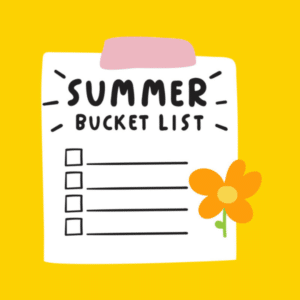
No Camp? No Problem! Structure Your Summer for Learning and Fun
Did summer break sneak up on you and you missed the boat on camp sign-ups? Fear not!
There are easy, effective ways to structure your child’s time so they have fun with educational summer activities and stay busy without wasting the summer away in front of screens. A bit of planning and creativity can turn an idle summer into a season of growth and enjoyment for kids of any age.
In this blog, we’ll explore why structuring your kids’ summer break is beneficial, offer practical tips on creating a balanced schedule, and suggest tools and resources that will keep them engaged and learning.
Let’s dive in and make this summer one to remember with some educational ideas.
Why Structure Summer Time?
Summer can be a great opportunity for kids to relax and have fun, but a bit of structure can go a long way in making sure they also continue to learn and grow.
Here are some of the top reasons why adding some structure along with at-home learning opportunities can be beneficial:
- Encourages independence and self-motivation. When kids know what to expect each day, they can take ownership of their activities and responsibilities. It’s a great way to teach them to manage their time and make decisions about how to spend it.
For younger children, structure provides a sense of security and helps them develop routines.
For older kids, it teaches time management and prioritization. Studies show that structured routines have many benefits for younger and older children, including improved executive functioning, more resilience, and improved life outcomes. Structure and routines are also proven to strengthen parent-child relationships, so it’s a win-win! - Prevents the summer slide. One of the biggest benefits of a structured summer is preventing the “summer slide.” This term refers to the loss of academic skills and knowledge that can happen when kids are out of school for extended periods.
Engaging in regular educational activities can help maintain and even improve academic skills over the summer. For more on how to combat the summer slide, check out this blog post. - Eases the transition back to school. A structured summer can make the transition back to school less jarring. By keeping a routine, kids stay in the habit of learning and following a schedule, which helps them adjust more smoothly when school starts again.
Incorporating structure into your child’s summer doesn’t mean sacrificing fun. It’s about finding a balance that keeps them engaged, learning, and growing, all while enjoying their break.
How to Structure Your Kids' Summer Time
The key to a balanced schedule is to mix structure with spontaneity, ensuring that kids have both predictability and freedom in their days. Here are some practical steps to take.
1. Create a summer bucket list.
This first step is essential. Work with your kids to create a summer bucket list (check this page out for some fun ideas) filled with special activities they’d like to do. This can be anything from planting a garden to learning a new board game to having a picnic in the park.
Having a list of big and small activities gives you a go-to resource for fun ideas when you’re planning the week and can even become a summer project you and your kids will enjoy completing as time goes on.
2. Set realistic goals.

Setting achievable and meaningful goals for the summer can give kids a sense of purpose and keep kids entertained. Discuss with your children what they’d like to accomplish, whether it’s reading a certain number of books, learning a new skill, or completing a project.
Breaking goals into smaller, manageable steps makes them less overwhelming. Make connections between blocks of time in their schedule to work on their bigger or more personal goals. For example, if your child wants to learn to jump rope, daily outside time is a great opportunity to reach that goal!
3. Provide a daily schedule with flexibility.
Be sure to incorporate “free choice” or “free time” each day so kids have some autonomy in spending time on desired activities. You might also try out themed days (like “Make It Monday” for crafts and projects, “Trip Tuesday” for outings, “Water Wednesday” for water activities, “Thoughtful Thursday” for learning, and “Fun Outside Friday” for outdoor play) that offer flexibility within each theme.
No need to schedule every day down to the minute just provide an outline of major activities and blocks of time. Younger children will need more defined structure whereas teens will benefit from a bit more flexibility.
4. Balance learning and non-academic time.
A healthy summer schedule includes both structured activities and free play. Mix in some academics, extracurriculars, and child-chosen activities. Yes, set aside time for reading or math games, but also let your kids have unstructured playtime where they can use their imagination and creativity.
5. Integrate learning into everyday activities.
No need to reinvent the wheel—use what’s already around you for summer learning activities. Everyday activities like cooking, gardening, and family outings can be great learning opportunities. Cooking reinforces math and science concepts, gardening is a hands-on biology lesson, and outings can be educational adventures.
6. Include chores and responsibilities.
Did you know it’s been proven that children who start helping with chores by four or five years old have higher levels of self-confidence, self-efficacy, and work ethic later in life?
Involving your kids in household tasks teaches responsibility and essential life skills. Assign age-appropriate chores and turn them into learning experiences. For example, measuring ingredients for a recipe can improve math skills, and organizing their room can teach planning and sorting.
7. Lean on summer schedule templates and resources.
To help get started, check out some plug-and-play summer schedule templates and decide which one might work best for you and your family.
- This article lays out sixteen different visual schedule resources if you’re into aesthetics
- We love simplicity at Ed2Grow and one mom blogger has an easy process for setting up her “just structured-enough” summer days
Time Blocking and Tools for Structuring at Home
To keep your kids’ summer days productive and enjoyable, try thinking in terms of time blocks or units dedicated to different activities. Here are some areas you might focus on and tools to support you.
Educational screen time
Screen time can be productive when used strategically. There are plenty of educational apps and websites that make learning fun, and our Ed2Grow Resource Library is a great place to find the educational tools your family needs.
STEM Activities
Incorporating STEM activities can spark your child’s interest in science, technology, engineering, and math while cultivating their critical thinking and problem-solving abilities. Tools like Code Wizards HQ, Scratch, and Khan Academy offer coding lessons for kids, and STEMfinity is a one-stop STEM shop that includes the latest, vetted STEM products and services.
STEM Activities
Incorporating STEM activities can spark your child’s interest in science, technology, engineering, and math while cultivating their critical thinking and problem-solving abilities. Tools like Code Wizards HQ, Scratch, and Khan Academy offer coding lessons for kids, and STEMfinity is a one-stop STEM shop that includes the latest, vetted STEM products and services.
Physical activity.
Keeping your child physically active even is crucial for their health and development. Physical activity doesn’t have to mean summer sports. Encourage outdoor play with life-sized board games, a scavenger hunt, or family activities like biking and hiking.
On those blistering summer days, you can find tons of indoor games or activities using GoNoodle or YouTube to encourage children to keep moving.
Reading Routine
Establish a daily reading routine to foster a love for books and prevent the summer slide in literacy. Join your local library’s summer reading program or use apps like Libby or Epic! for access to a vast library of eBooks for kids of all ages.
For readers still building their fluency and decoding, tools like Ello and Readability provide real-time feedback as your child reads aloud. The right reading routine can help kids flex both literacy skills and writing skills.
New Hobbies
Summer is a great time for kids to explore new interests and hobbies. Whether it’s learning to play an instrument, taking up photography, or trying out a new sport, dedicating time to new pursuits can be exciting.
Aspiring pianists, guitarists, and singers can use Simply, a tool that listens to the notes kids play or sing and gives immediate feedback. Websites like Outschool offer a variety of online classes in different hobbies and subjects, including online summer camps!
By breaking the day into clear chunks and using helpful tools, you can create a summer schedule that balances learning, fun, and relaxation. This approach not only keeps kids engaged but also supports their growth and development throughout the summer.
Be sure to keep an eye on the ever-growing Ed2Grow Resource Library for a variety of helpful tools and products that support your child’s academic growth.
Embrace Summer Structure and Spontaneity
Remember, structuring your child’s summer doesn’t mean every moment needs to be meticulously planned with educational ideas. A mix of predictability and flexibility creates a fulfilling and enjoyable summer full of fun summer school activities for kids and adults alike.
Keep things simple, embrace the unexpected, and don’t be too hard on yourself if things don’t always go as planned. The goal is to keep your kids engaged, learning, and having fun and to make your life a little bit easier.
Here’s to a summer full of adventure, growth, and joy!
Stay connected with Ed2Grow for more valuable insights and resources to help you navigate the joys and challenges of working with kids. Your journey matters, and we’re here to support you.
This blog post may include paid ads and as an Amazon Affiliate, Ed2Grow earns money from qualifying purchases.

